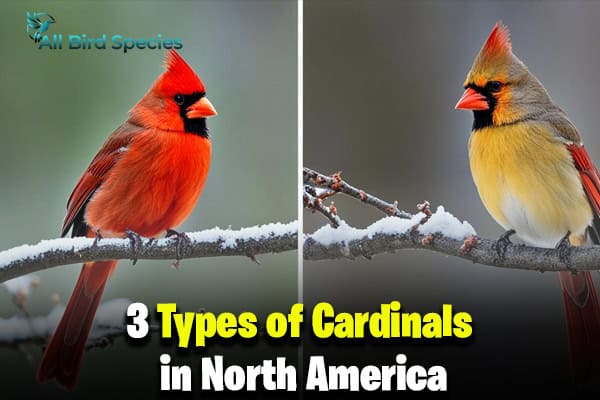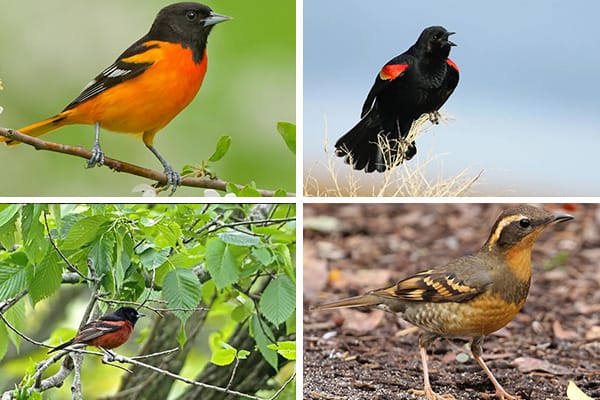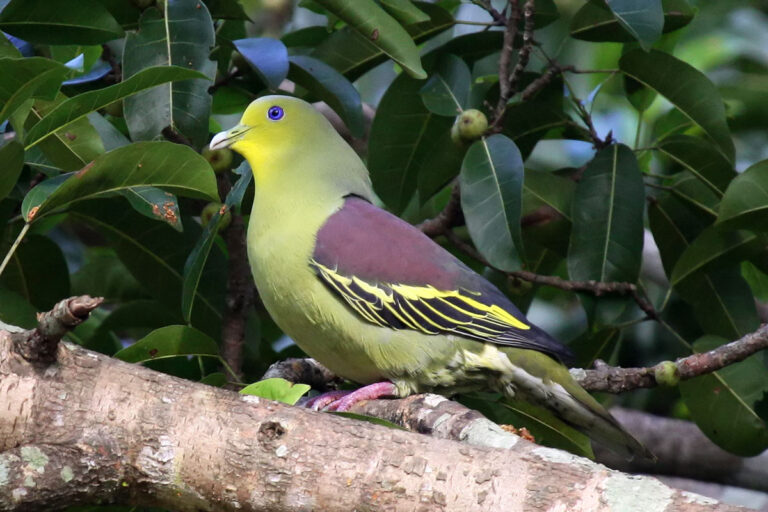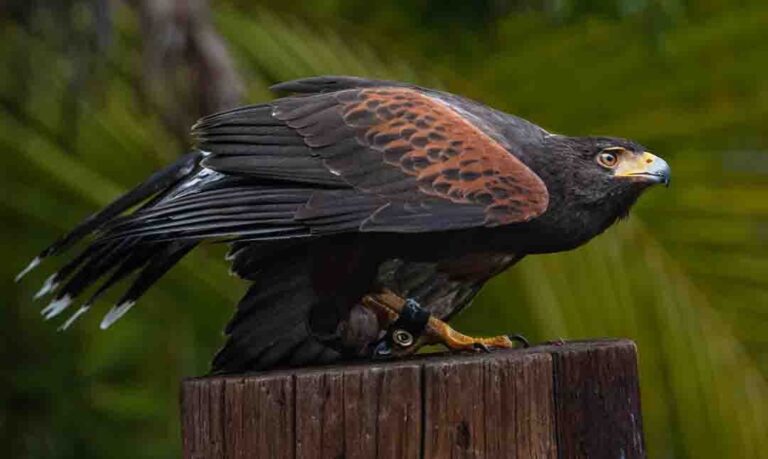Meet 3 Beautiful Types of Cardinals in North America
Did you know about Northern Cardinals and its different types? This bird is just one of the fascinating types we’ll look at today. We’ll explore the enchanting world of North American cardinals, focusing on three stunning species: the Northern Cardinal, the Pyrrhuloxia, and the Vermilion Cardinal.
These birds are known for their bright colors and sweet songs. They make our outdoor spaces more beautiful and play key roles in the ecosystem. Let’s dive into their habitats, traits, and behaviors. We’ll also share tips on how to attract these lovely cardinals to our yards.
Learn Different Types of Cardinals (North American Cardinals)
Exploring the Cardinalidae family shows us the amazing variety in birds. This group includes cardinals, grosbeaks, and buntings. They share certain bird characteristics that make them unique.
Understanding the Cardinalidae Family
The Cardinalidae family has about 14 genera and many species. These birds are medium-sized, measuring from 4.5 to 9.4 inches. Males stand out with bright colors, while females are more subdued.
Their strong bills help them eat seeds, a big part of their diet. This diet is rich in nutrients, which makes their colors so bright.
Common Traits of Cardinals
Types Of Cardinals are known for their eye-catching bird plumage. They eat seeds, fruits, and sometimes insects. Their diet is full of nutrients, which shows in their bright colors.
These birds are active in song and mating displays. This shows their importance in nature and why they’re loved by birdwatchers.
| Trait | Description |
|---|---|
| Size | 4.5 to 9.4 inches |
| Bill Type | Strong conical, adapted for seed feeding |
| Coloration | Sexual dimorphism; vibrant males vs. muted females |
| Diet | Seeds, fruits, and insects |
| Behavior | Melodious songs and territorial displays |
1. Northern Cardinal
The Northern Cardinal is famous for its bright red color. It’s a symbol of beauty in North America. You can find it in the eastern United States, including Texas, New Mexico, and Arizona. It lives in many places like woodlands, gardens, and shrublands.

Habitat and Range
The Northern Cardinal lives in different environments, showing how adaptable it is. You can find it in:
- Woodlands
- Gardens
- Shrublands
- Urban parks
This bird covers a big area in the eastern U.S. It’s well-known because it doesn’t migrate.
Physical Characteristics
The Northern Cardinal looks very different, especially between males and females. Males have bright red feathers and a black mask on their face. Females are more brown with reddish highlights. These differences help them during courtship and mating.
Year-Round Presence
Northern Cardinals stay in our areas all year. They make our places more interesting. They form strong bonds and often mate for life. This helps their families and communities.
2. Pyrrhuloxia
The Pyrrhuloxia, also known as the desert cardinal, is a bird that lives in the dry lands of the southwestern United States and Mexico. It has special features that make it stand out. Learning about how to identify it and what it eats helps us appreciate this unique bird more.
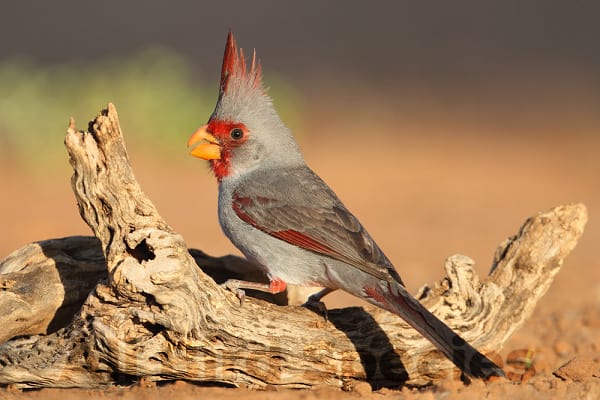
Identification Features
The Pyrrhuloxia has distinct traits that make it easy to spot. Male birds have bright gray feathers with red on their face and belly, similar to the Northern Cardinal. Females have less bright colors, which helps them blend in with the desert. They also have a bright yellow bill, which makes them easy to tell apart from other cardinals.
Feeding Habits and Diet
The Pyrrhuloxia eats a variety of foods to survive in the desert. It eats seeds, berries, insects, and fruits from cacti. This shows how well it has adapted to its harsh environment. You can see these birds eating on the ground or at bird feeders, showing how they find food in different ways.
3. Vermilion Cardinal
The Vermilion Cardinal, known as Cardinalis phoeniceus, is a standout among southern cardinals. It’s known for its bright red feathers. Found in the southern U.S. and Mexico, this bird catches our eye with its bright colors and lively actions.

One key feature of the Vermilion Cardinal is their courtship displays. Males perform elaborate dances to attract females. These birds live in dry areas like shrublands and farmlands, where we can see them moving through the bushes.
The Vermilion Cardinal’s bright look is key to its mating rituals. Its behaviors and social life show us how stunning nature can be right in our yards.
| Characteristic | Description |
|---|---|
| Scientific Name | Cardinalis phoeniceus |
| Coloration | Bright red plumage with contrasting black mask |
| Habitat | Dry shrublands and farmlands |
| Courtship Behavior | Vibrant displays and social interactions |
| Geographic Range | Southern United States and parts of Mexico |
Habitat and Behavior of Different Cardinals
Learning about the homes and ways of various Types of cardinals species deepens our love for these beautiful birds. Each cardinal type has found its special place to live and shows unique ways of living together and finding mates.
Preferred Habitats of Each Type
Choosing where to live is key for cardinals to survive. Let’s explore where each type likes to live:
| Cardinal Type | Preferred Habitat |
|---|---|
| Northern Cardinal | Woodlands, gardens, and shrubby areas |
| Pyrrhuloxia | Arid landscapes and scrublands of the southwestern United States |
| Vermilion Cardinal | Dry shrublands |
Social Behavior and Mating Patterns
Cardinals have interesting social lives. They form strong pair bonds which help them in their mating rituals. These rituals include beautiful displays that strengthen their relationships during the breeding season.
They also work together in feeding and nesting. This teamwork shows how social and complex they are, especially when mating, which helps in raising their young.
How to Attract Cardinals to Your Yard?
Attracting cardinals to our yards makes them more beautiful and lively. We can invite these stunning birds by using the right bird feeders and seeds. Let’s explore some effective ways to do this.
Best Bird Feeders for Cardinals
The best bird feeders for cardinals have lots of space for birds to perch and easy access. Platform-style feeders let many birds feed together and are comfy for cardinals. Tube feeders with big openings are great too, as they make it easy for the birds to eat.
Here are some key features to look for in bird feeders:
- Sturdy construction: Pick feeders made from strong materials to last through the weather.
- Large perches: Make sure the perches are wide enough for cardinals to sit comfortably.
- Easy to clean: Choose feeders that open easily for quick cleaning.
Types of Seeds Cardinals Prefer
Cardinal seeds are crucial for drawing these birds in. Cardinals like certain seeds more than others, so offering a variety is key. Here are some seeds they find especially tasty:
- Safflower seeds: Cardinals love these seeds, and they’re less liked by squirrels.
- Sunflower seeds: These seeds are a great choice because they’re nutritious and versatile.
- Nuts: Peanuts and other nuts are treats cardinals really enjoy.
By following these steps, we can draw cardinals to our yards. This lets us enjoy their bright colors and happy songs.
Interesting Facts about Cardinals
Cardinals are not just beautiful birds; they also have a deep cultural meaning. They are seen as messengers of love, hope, and renewal across many cultures. Their vibrant colors and songs touch our hearts and minds deeply.
Cultural Significance
Cardinals symbolize positivity and change in many cultures. Seeing these birds is often linked to happy moments or connections with loved ones. Their bright colors and songs bring joy, making them a big part of art and stories.
Common Myths and Misconceptions
Many myths surround cardinals, like the idea that they send messages from the dead. These misconceptions about cardinals add to their mystery. But it’s important to know the truth to truly appreciate these birds.
| Myth | Description |
|---|---|
| Sign from a Loved One | Many believe that seeing a cardinal signals a message from someone who has passed away. |
| Bringers of Good Luck | Some cultures view cardinals as good luck symbols, especially if encountered in groups. |
| Weather Predictors | There’s a myth that cardinals can predict the weather, such as storm warnings or changes in seasons. |
Check Our Previous Articles:
| Herons, Egrets, and Bitterns (Family Ardeidae) |
| Sparrows in Texas |
| Sparrows in Michigan |
| Falcons in Massachusetts |
| Cormorants And Shags (Phalacrocoracidae Family) |
Conclusion
We’ve looked at Types of North American cardinals and seen how they add beauty to our world. From the bright Northern Cardinal to the unique Pyrrhuloxia and the vivid Vermilion Cardinal, each has its traits. These traits make our wildlife appreciation richer every day.

